From Vepror Hasani
The first part
-The saga of the well-known patriotic and richest family of Korça, where its children graduated from the prestigious universities of Europe-
Memorie.al / That evening, Selim Mborja (Venxha) and his wife, Fitreten, returned home late. In Korça they had 65 shops, cafes and apartments, thousands of hectares of land and forests. Initially, they had lived in the house in the village of Mborje, next to the church of Ristozi, in a large two-story building, with a magnificent view, built with carved stones, with many rooms decorated with carved wooden elements and decorated ceilings, with large yard in the frontal view of, woven with dooryard. Around this house, the other houses of the Mborja (Venxha) tribe were built. Then they built another big and beautiful house above the Birra Korça factory. They already lived there.
Upon entering the house, they noticed that someone had dropped a letter under the door. Selim Mborja took it and started reading it. His gaze moved anxiously through the lines: “I am writing to you, I am your friend, – the letter said, – I did not have the courage to explain to you closely, because I am afraid for myself and my family, and for this you I apologize, but two or three days ago, I found out that the guerrilla unit of Korça has decided to execute you, so you should leave…”!
Selim’s wife, Fitretja, daughter of Neki Starova, one of the richest people in that area, remained worried. Her body was shaking like a leaf in the wind. He was waiting for whatever Selim Mborja told him. Whatever her husband’s decision was, she would stay with him even if they went to the end of the world.
She adored her husband. Selim was a skilled and cultured man, he had studied in the West. “We will discuss it with our people”, – Selim Mborja told him, – and we will decide what to do. It must have been September-October 1944.
Selim Mborja (Venxha) could not believe that he would leave Korça and Mborja, where he was born. The whole life of his people, generation after generation, was devoted to Korça and every time the opportunity arose, they had come to its defense with their lives.
The first of the Twins was called Banush; he was a living legend of charity, as even the oldest remembered him. His name of kindness reached the younger generations. Until the end of the 18th century, they lived in Greece, had many properties and were very rich.
With great wealth, they also settled in Mborje. They helped poor families. Banushi took care of them, as for his own family: “Do good and never mention the good you do”, – was his message, – God sees everything”! Because of the great wealth he had, in Mborje he was known as Banush Aga or Banush Efendiu, but he was also often called Banush Venxha, because that was the name of the place where he lived in Greece, in the area of Grevena.
The charity of the large Mborja (Venxha) family never ran out. Banushi left behind 7 children: Mustafaji, Osman, Hysen, Mehmet, Sali, Rexhep and Islam. Thanks to this large family, which shone with its virtues, the village of Mborje took on the appearance of a city, with famous shops and cafes like no other place. They also came there from Korça; Muslims and Christians celebrated together.
In one of the chronicles of the time, it is written: “Nuri Efendiu, the lawyer, circumcised the boys last week. He had invited all government officials and many Muslims and Christians to the wedding. He had dinner in a cafe from Mborja. A large majority of guests, with songs and country music, were entertained until the morning. That night many bullets were thrown into the sky and many rifles were fired”! (Gazette of “Korça”, June 11, 1909).
One morning, Selim Mborja went to the market of Korça, to the “Pellallit” club and left an order to the owner of the bar. “If Qemali (son of Selim Mborja’s uncle), Mehmet or Syrjai (his cousins) comes, because the bar was their favorite, he should tell them that Selim Mborja was looking for them and he definitely wanted to meet them.”
Mehmet Mborja (Venxha) had graduated from the “Skuola Alleievi Carabinieri” Police School in Florence, Italy, and had knowledge of secret criminal groups, such as the guerrilla unit of Korça.
In the so-called uprising of “Vorio-epire” on April 2, 1914, according to the newspaper “Koha”, May 15, 1914, Mehmet Mborja; the commander of the Albanian Gendarmerie, Dutchman Snellen Van Vallenhoven; Themistoklis Gërmenji, the American consul general Spencer, captain Kajo, Dervish File, Turhan Hysen bey Pirgu, Jashar bey Starova, Agush Çaushi and hundreds of others fought bravely and succeeded in liberating Korca.
But Selimi definitely wanted the opinion of Qemali and Syrjai, whether he should stay or, finally, leave Korça. They met at the house above the Brewery. Selim’s wife, Fitretja, watched the men’s conversation with concern the whole time. The risk was assessed as real. Guerrilla units had begun to eliminate people who did not like the regime that was coming to power. The friend who wrote them the letter was right.
His execution could happen from day to day. It was considered reasonable for Selimi to leave Korça as soon as possible. When his cousins left, Selim Mborja looked at his wife for a moment and said: “We will leave”! A tear fell from Fitrete’s eye: “I will come with you, wherever you go,” she told him. The husband’s hidden pain permeated Selim Mborje’s entire being.
Selim Mborja (Venxha) and his wife, Fitreti, had not yet decided what day they would leave Korça. For them, everything was unfair; the decision taken by the guerrilla unit of Korça was criminal; the life of a large patriotic family was being played with. Selim Mborje’s father, Mustafaji, had always taken care to make friendships with people who loved the country.
In such a case, the press wrote: “Myftar Aga from Sevrani, who previously was the commander of the Gendarmerie of Korça, to marry the son who took the daughter of Mustafa Efendi Mborje, ordered here together with the son-in-law, Mr. Kadri, who was kajmekan in Leskovik, in Tepelena in Vlora and elsewhere. Myftar Aga, as he received the news, returned to Përmet yesterday. We wish them all the best and may the couple inherit”. (“Gazet e Korça”, Thursday, 22nd fall of II).
Mustafa Mborja (Venxha) himself came to the defense of the country from the first day the Greeks entered Korça, on December 7, 1912. He helped the return of people who had left because of the war. His name is listed in the “Commission of the Fugitives”, listed with the most honorable names of the city of Korça: “The commission consisted of: the chairman Abdyl Ypi. Members: Riza bey Zavalani, Tefik Rushiti, Qani bey Dishnica, Stavre Karoli, Petraq Kondi, Kristo Dako, Sadik Voskopi and Mustafa Mborja”. (“Koha” newspaper, Saturday, May 24, 1914).
And Abedin Mborja (Venxha), Mustafa’s nephew, was elected to the “Relationship Commission”, which reported the situation to local and foreign authorities. Members of this commission were: “Chairman Emin Efendi, members: Maliq Bej, Ahmet Efendi, Mayor of the Municipality; Shaqir Efendi, Emin Efendi, Rakipi Aga, Abedin Efendi Mborja, Miçe Çikozi, (there is another name, but it is not read), Abidin Efendi Tregtari, Xhafer Bey Luarasi, Mehmet Ali Bey, Rakip Aga Jemenli and Andrea Turtulli”. (“Koha” newspaper, Saturday, May 24, 1914).
During this time, another relative of the Mborja family, Ismail Sali Mborja, in 1914-1915, sponsored the publication of the Albanian primer, compiled by Jashar Agjahu. Its publication was made by the “Korça” printing house.
Meanwhile, Haki Mborja (Venxha), the son of Selim Mborja’s uncle, shone with his patriotism. Born in Mborje in 1876, he received his first lessons in Korça and then in Manastir. He completed his higher studies in Medicine in Istanbul, where he received the highest scientific degree, that of Doctor of Sciences.
In 1908, he was appointed a doctor in the Municipality of Bitola, where he met many patriots who aimed to create a movement for national liberation. In September 1908, it became part of the “Knowledge” and “Progress” society. After two years, a doctor came to the Municipality of Korça.
On June 16, 1911, together with the publisher of the “Korça” newspaper, Sami Pojani, they initiated the creation of the Committee of Insurgents. That same month, Haki Mborja created the first Albanian detachment and went to the mountains. He collaborated with Bajo Topulli, Qamil Panariti, Shahi Kolonje, etc.
His platoon became known for its battles in Korçë, Devoll, Kolonje, Opar, Gorë, Mokër, Gjirokastër and Elbasan. In addition to the Albanian newspapers, the London newspaper “Time” also wrote about Haki Mborjen, while the Serbian consul in Bitola reported to his government: “In Korçë, there are over 500 people in the mountains, led by Haki Bey”. In August 1911, he participated in the Assembly of the Insurgents of Elbasan, organized in the village of Shelcan, for the realization of joint actions.
In 1912, he participated in the declaration of Independence. After the defeat of the “Vorio-Epirote” uprising, his detachment became the shield of Korça: the territories from Guri i Cjapit, to Grykat e Morje, became impenetrable to the Greeks. From the day of the creation of his squad, Haki Mborja was called; “The insurgent doctor”.
With the arrival of the French, he helped to declare the Autonomous Province of Korça and participated in its government. During this time, he helped open 60 schools in the province of Korça, including the Mborje school. During the years 1918-1920, he stood in defense of the southern borders of Albania, strongly supported the Congress of Lushnja and its government.
In 1926, he was elected deputy, received more votes than Fan S. Noli, but in 1928, he left politics, because he saw the Kingdom as premature in a country like Albania. He died at his home in 1931.
Selim Mborja and his wife, Fitreti, decided to go to Thessaloniki, they had property and a hotel there, they did not lack financial means. While they were preparing the spoils, Fitreti could not hold back her tears. The day before, she was escorted with her people to Starovë in Pogradec. He would no longer see his relatives, even when he died no one would come to cry at his grave.
Even beyond death, she would remain lonely. Koço Kota also asked to travel with them. They did not say no and both families traveled together. Upon arriving in Thessaloniki, Selim Mborja settled in his private hotel. The first night away from Korça was painful. People who killed behind his back and for no reason, had forced him to leave Korça.
That night for Selim Mborje, remained the loneliest night of his life. In Korça, he was always among friends. He also liked the company of the Lyceum professors; he often met with them: with Elmaz Ahmet, Abaz Ermenji, Fejzi Dobi, Selman Riza, Aqif Selfo, Abedin Shkëmbi, Aldo Çoba, Malo Kodra, etc. Enver Hoxha had also been a professor at the Lyceum, but they did not have any great company with him.
Enver Hoxha himself, in his book, “When the Party was born”, writes: “Fundot, with Vangjo Turtulli, with Manot, with Katro and many others of this caliber, as well as with those of a lower caliber, were the representatives of the Christian bourgeoisie…! Whereas Fazlli Frashëri, Qazka’s brother, Selim Mborja, Tefik Mborja, Rexhep Merdani and many others like these and, lower than these, formed the opinion of; “Muslim elites” Korçara…”!
So, from what can be seen, Hoxha’s friendship with the Korca priest did not exist. Perhaps this was the reason why he had requested the extrajudicial execution of Selim Mborje. Fitreti, the woman who had always taken care of the orphans and poor families of Korça, also felt very sad.
There wasn’t a marked day that she didn’t ask Selim: “What will we donate today, for the poor families”? And he did his best to ensure that the help offered was valuable to overcome problems. She was truly a saint.
Fitret went out on the porch, he wanted to get rid of the boredom that was tiring him so much. Thessaloniki was beautiful, shining from all sides, but also Korça, it had always been beautiful. Since 1850, they had compared it with Izmir, but since Izmir was considered the “Paris of the Mediterranean”, by analogy, Korça was called “Little Paris”. Even Korça had enlightenment, years and years ago.
In 1911, he installed the new lighting system: “Our government (of Korça) brought a ‘Radium’ system lamp with 350 candle powers for testing. The lamp has a beautiful light and so soon, they will bring more such lamps to light up the city and the streets. We congratulate Mr. Ahmet Efendi, the head of the government as well as all the advisers, for the efforts they make to beautify the city…”! (“Koha” newspaper, March 17, 1911).
Then, the city was equipped with a generator, but after the departure of the French, in May 1920, the power production machine stopped working. The newspapers of Korça wrote ironically: “Korça is a beautiful city, at night there are no lights.
It seems that the light spoils the eyes of the Korcharians, who have been used to no lights at night for so many years now. We don’t like to believe that the Municipality does not take care to light Korca at night. We know that the electric car that the French had, remained here, why is it not used”?! (“Gazette of Korça”, July 21, 1920).
However, the year 1924 also found Korça without lights. In 1925, the Municipality announced the terms of the tender for the electrification of Korça. There were two companies in the game: “Jeneral Elektrik” of Selim Mborje and “Manseman”, the German company. The best offer was given by Selim Mborja. On September 18, 1925, the construction of the power plant began.
In April 1926, it met part of the energy needs. The complete electrification of Korça was announced by the press: “Since the day before yesterday, with the agreement of the mayor, the company ‘General Electric’ began to provide light for the entire city, not like before, which provided light until one after midnight”?! (“Koha” newspaper, November 6, 1926).
Just so that the city of Korça had light, Selim Mborje’s “General Electric” company spent more than expected. The newspapers wrote: “The ‘General Electric’ company, in order to satisfy all its customers, did not take into account the heavy expenses charged to it, because the people and the customers wanted light”. (“Koha” newspaper, November 6, 1926).
Next to the power station, a powerful grinding mill was also built. Later, in 1936, Selim Mborje’s “General Electric” built the first hydropower plant in Albania in Vithkuq. Selim Mborja did not save money when he saw that his help was needed. Memorie.al
The next issue follows





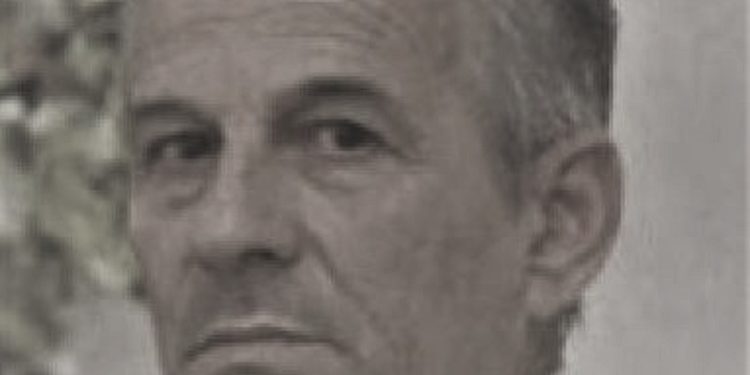
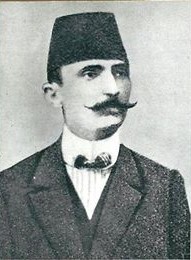
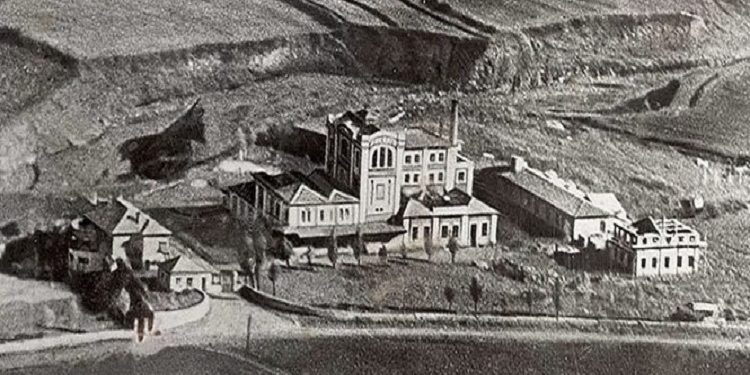


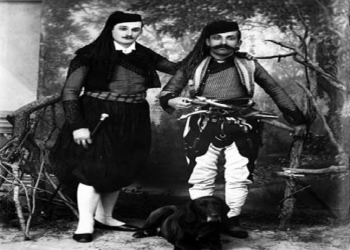
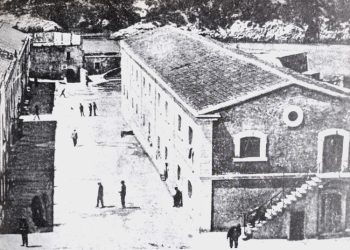

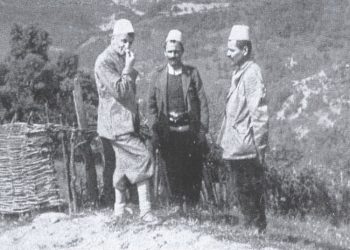
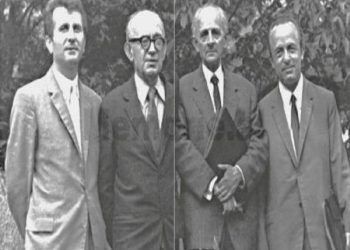
![“We hosted the German friend with wine, ‘Moskat’ raki that Enver [Hoxha] used to drink, but in his villa, he told me: ‘Hey Belul, who told you to accompany Strauss…?’”/ The rare testimony of the former Chairman of the Pogradec Committee](https://memorie.al/wp-content/uploads/2025/11/jozef-shtarus-350x250.jpg)
